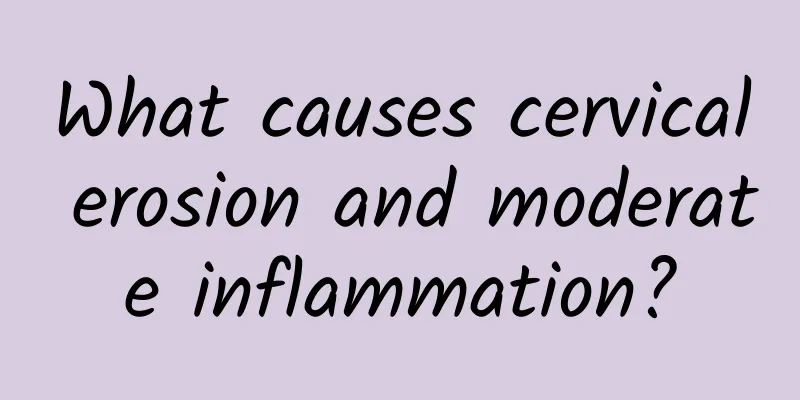What causes cervical erosion and moderate inflammation?

|
Moderate cervical erosion causes moderate inflammation, which is closely related to factors such as infection, excessive sexual activity, frequent gynecological surgery or hormonal abnormalities. These reasons may damage the protective barrier of the cervix and cause an inflammatory response. Cervical erosion is usually referred to as cervical columnar epithelial ectopia in medicine, not physical "erosion". Infection is the most common cause, especially invasion by bacteria and viruses (such as HPV and herpes virus) caused by unclean sexual life or long-term repeated infection. Frequent or rough sexual life can cause micro-invasive damage to the cervix, and the lack of correct contraceptive measures can easily lead to aggravated inflammation. Gynecological surgeries such as repeated curettage and cervical surgery may damage the cervix, and incomplete repair may lead to local inflammation. Endocrine disorders, especially high estrogen levels, may also increase the fragility of the cervical mucosa. External environments such as unsanitary public places and hot and humid climates may also increase the risk of infection. Cervical erosion is usually referred to as cervical columnar epithelial ectopia in medicine, not physical "erosion". Infection is the most common cause, especially invasion by bacteria and viruses (such as HPV and herpes virus) caused by unclean sexual life or long-term repeated infection. Frequent or rough sexual life can cause micro-invasive damage to the cervix, and the lack of correct contraceptive measures can easily lead to aggravated inflammation. Gynecological surgeries such as repeated curettage and cervical surgery may damage the cervix, and incomplete repair may lead to local inflammation. Endocrine disorders, especially high estrogen levels, may also increase the fragility of the cervical mucosa. External environments such as unsanitary public places and hot and humid climates may also increase the risk of infection. Prevention and treatment of moderate cervical erosion inflammation should be approached from multiple angles. Regular prenatal and gynecological examinations can detect problems early. Maintaining healthy sexual habits and avoiding frequent surgeries are the key to prevention. Moderate inflammation can usually be treated with physical therapy (such as LEEP knife or laser treatment), local medication (such as vaginal antibiotic suppositories) or comprehensive drug treatment (anti-infective drugs combined with antiviral drugs). It is advisable to eat more foods rich in vitamins C and E (such as citrus fruits and nuts), and iron-supplementing foods (such as animal liver) can also help improve local tissue healing. |
<<: The dangers of ovarian cyst torsion during pregnancy
>>: Check for symptoms of premature ovarian failure
Recommend
Dysmenorrhea is not something you can just endure
Dysmenorrhea is a common gynecological disease, w...
High-quality public hospitals for miscarriage treatment
Abortion is not unfamiliar to most people. There ...
Do I need to make an appointment for vaccination?
Do vaccinations require appointments? The answer ...
Nutritionist: 3 ways to avoid gaining weight when eating hotpot in winter
The wind is cold and it’s time to try hotpot. Nut...
How much does it cost to check the fallopian tubes?
There are many ways to check the fallopian tubes,...
Can endometriosis be inherited?
Is endometriosis hereditary? Endometriosis is a c...
Hot stir-fry low-calorie detox recipes are delicious and good for weight loss
Bitter Melon with Bell Pepper Ingredients: 300 gr...
Women over 30 should be alert to uterine fibroids!
Uterine fibroids are the most common benign tumor...
Beware of blind fashion causing uterine fibroids
Uterine fibroids are one of the most common tumor...
Women should pay attention to the causes of ectopic pregnancy
Ectopic pregnancy is a common female disease. In ...
Daily Dietary Precautions for Cervical Warts
Cervical warts are a sexually transmitted disease...
Is ovarian cyst during menstruation serious?
If you find an ovarian cyst during your menstrual...
Surgical methods for uterine prolapse
Surgical methods for uterine prolapse: Uterine pr...
Can I exercise if I have cervicitis?
Cervicitis is a common type of gynecological geni...
The treatment of chronic adnexitis cannot be delayed
Many people panic and don't know what to do a...









